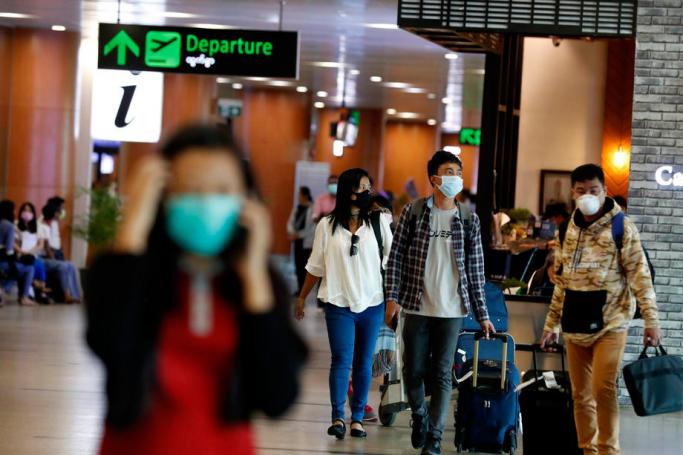Economic growth across the South-East Asia region is expected to slow to 4.2% in 2020, as the novel coronavirus (COVID-19) outbreak continues to weigh on tourism, disrupt regional supply chains and dampen household spending.
This is according to the latest Economic Update: South-East Asia report from chartered accountancy body ICAEW. However, growth is expected to spring back to 5% in 2021, supported by accommodative macro policies and fiscal stimulus.
The adverse impact of the COVID-19 outbreak on China’s economy is set to spill over significantly into the South East Asia (SEA) region through lower tourism flows, household spending and varying degrees of supply chain disruptions. As such, tourism- and export-dependent economies can expect the most impact. Thailand will be the worst hit amongst the SEA economies, while Vietnam and Singapore will suffer from supply-side disruptions and travel bans. Myanmar’s economy is also suffering from decreasing border trade with China. On the other hand, the impact on Indonesia’s growth is likely to be contained as the country is less reliant on tourism.
However, impacts on tourism and supply chains are expected to be short-lived. The US-China Phase One trade deal and a recovery in the global electronics cycle in the second half of the year bode well for the region’s external outlook, with export and import momentum expected to improve significantly throughout the rest of the year. Loosening of monetary policy within the region and proactive boosts to fiscal spending should also offer additional support to domestic demand and partially ease the impact of the virus outbreak. Overall, GDP growth across the region is forecasted to fall to 4.2% in 2020, down from 4.5% in 2019, the slowest pace of growth since the 2008 global financial crisis.
“While the impact of the COVID-19 outbreak will be larger than that of SARS due to greater movement of people and interdependence of supply chains, we expect that most of the economic impact will be in the first quarter of 2020, and growth will recover in the second half of 2020,” said Sian Fenner, ICAEW Economic Advisor & Oxford Economics Lead Asia Economist. “As such, we have downgraded our growth forecast for the region to 4.2% in 2020, although this should be followed by a rebound to 5% growth in 2021.”
Accommodative macro policies to cushion economic slowdown from the outbreak
Against the backdrop of a deteriorating economic outlook, expansionary monetary policies and fiscal stimulus will help soften the impact of the virus outbreak. Thailand, Malaysia and the Philippines have cut policy rates by 25 basis points each this year, with Indonesia likely to push for a further cut in Q1 2020. In Singapore, the Monetary Authority of Singapore (MAS) may shift to a zero-appreciation bias in its trade-weighted currency band in April.
On the fiscal front, Singapore’s introduction of a larger-than-expected fiscal relief package (1.2% of GDP) in its Budget 2020 will help its economy cope with the outbreak while Thailand and Malaysia have also recently followed suit.
Mark Billington, ICAEW Regional Director, Greater China and South-East Asia, said, “We remain cautious that if the outbreak is prolonged, longer-term expenditures could be affected, slashing growth even further. At the moment, we expect the impact of COVID-19 to be high, but short-lived and cushioned by countries’ efforts to boost domestic demand.”
Singapore’s GDP growth forecast has been downgraded
The COVID-19 outbreak has caused Singapore to close its borders to visitors coming through China, Iran, northern Italy and South Korea, affecting tourism-related sectors heavily in Q1 2020. Additionally, Singapore’s service exports will likely see a sharp decline that is only partially offset by weak service imports due to the close, bilateral ties it has with China. Private spending will also grow at a slower pace than initially estimated with dampened consumer and business sentiment.
Looking ahead, Singapore’s Budget 2020, one of the largest budgets in history, will cushion its economy from continued negative economic impacts stemming from the COVID-19 outbreak. The government’s fiscal relief package (1.2% of GDP) and SGD 6.4bn package to support frontline workers, businesses and households will help to bear wage costs. Fixed investments are also slated to grow at a healthy pace with the line-up of public megaprojects such as Changi Airport Terminal 5 and North-South Corridor.in upcoming months.
All in all, against a short-lived but challenging external environment and the impact of the virus outbreak, Singapore’s GDP is likely to slow to 1% in 2020.
Thailand’s GDP growth to slow
The Thai economy ended 2019 on a weak note with its GDP growth slowing to 1.6% year-on-year in Q4 2019, with growth weakening across the board. Coupled with headwinds from the COVID-19 outbreak and delays in government spending, Thailand is expected to be the most impacted amongst SEA economies. Thailand’s tourism sector and household spending will be the most affected by the outbreak, especially in Q1 2020. In addition, a more muted but still negative impact on industrial production and goods exports following the disruption to supply chains and lower Chinese import demand will likely persist.
However, the country could expect a solid recovery in economic growth in H2 2020, supported by accommodative macro policies. To date, the Bank of Thailand has reduced its policy rate to a new low of 1% in February to counter inflation alongside other fiscal measures. The Thai government is likely to announce further support to households and the tourism sector, with an additional stimulus package. Overall, Thailand’s GDP growth is expected to slow to 1.9% in 2020, representing a slowdown in growth from 2.4% in 2019.












